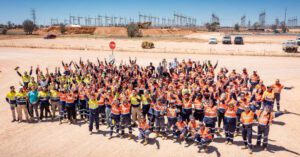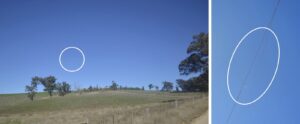Tasmanian’s opposition Labor party says “at least” six wind farms proposed for development on the island state face major delays, or worse, in the fallout from the decision to cut the controversial MarinusLink project in half.
MarinusLink, the federal and Victorian government-backed plan to install two sub-sea electricity transmission links across the Bass Strait, is broadly considered crucial to Tasmania’s “Battery of the Nation” plans, which include exporting renewables to mainland Australia.
That plan was effectively cut in half in September, however, after the Tasmanian Liberal government raised concerns about a blow-out in costs.
Based on the projected cost blow-out, federal and state governments struck a deal to pare it back to just one 750MW sub sea cable, with the federal government also agreeing to take a bigger stake in MarinusLink to reduce the financial burden on Tasmania.
In turn, state-owned transmission company TasNetworks has since announced it will deliver the North West Transmission Developments (NWTD) in two stages; the first stage comprising the upgrades required for the first Marinus Link cable, “while maintaining flexibility to deliver the network needed for a second Marinus Link cable.”
The 240km NWTD project adds new and upgraded overhead transmission lines to increase the capacity and reliability of Tasmania’s electricity network in the state’s north-west and its ability to host major new generation projects, including the massive 900MW Robbins Island wind farm proposed by ACEN Australia.
TasNetworks CEO Sean McGoldrick said in a statement on November 6 that the two-staged approach would provide “certainty and confidence” for the business, while also ensuring Tasmanians only paid their fair share for the new energy infrastructure.
“The project has been revised to deliver the NWTD across two stages, focusing on the delivery of Stage 1 until a final decision is taken on the second Marinus Link cable. This approach will see approximately 60 per cent of the proposed NWTD built in the first stage,” McGoldrick said.
But Tasmania’s Labor party says the TasNetworks decision is a disaster for renewable energy developers in the state, leaving “at least six windfarms” without connections to the grid and placing more than $10 billion worth of investment at risk.
“The major benefit from Marinus is getting new generation into the grid. The new plan effectively scraps or delays six of them indefinitely,” the state’s shadow minister for energy, Dean Winter said in a statement on November 07.
“The Tasmanian economy cannot grow without more generation being built in Tasmania. To do that we need to provide the necessary connections.
“Premier Jeremy Rockliff needs to intervene and make sure the decision to delay the North West Transmission Development doesn’t keep Tasmania’s economy in the dark.”
According to TasNetworks’ updated plans, Stage 1 of NWTD, starting in 2025, would take in Palmerston-Sheffield-Heybridge and Stowport to Burnie to align with the first Marinus Link cable.

Stage 2 – with no concrete date – would deliver the rest, including the section between Staverton to Burnie via Hampshire Hills, to align with the second Marinus Link cable.
Labor’s Winter says that this is the component of the transmission build that would have connected wind energy projects like Robbins Island, Jim’s Plain (Acen Australia), Hellyer (Ark Energy), Guildford (Ark Energy), St Patricks Plains Acen), and Whaleback Ridge (West Coast Developments).
In renewable hydrogen, HIF Global also proposes to establish an e-fuels facility in Hampshire.
“These are massive projects, this is billions of dollars of private investment there was going to be flowing into Tasmania, which is now all at risk.”
Acen Australia, which has three wind farms in the development pipeline in Tasmania’s north-west, told RenewEconomy that TasNetworks’ change of plan was definitely a concern, but that it was hopeful a work-around could be found.
A spokesperson from the company said it was “hard to fathom” how their projects would connect to the grid without the second part of the transmission upgrades. In particular, they said the Hampshire Hills to Burnie link – just 30km – had been an important part of the developer’s plans.
“The North West Transmission Development wasn’t purely to service Marinus cables but also to facilitate getting new renewable energy projects into the grid to support hydrogen development in the state and support meeting the TRET,” Acen Australia said in a statement.
“It would seem there is an opportunity now for government to reaffirm its commitment to TRET, North west REZ and renewable and hydrogen development in the state by either pushing forward with the second Marinus cable ASAP or committing to including the development of the Hampshire to Burnie upgrade in stage 1 to support renewable energy development in the North West REZ as well as Hydrogen development in the state.”
Tasmania’s minister for energy and renewables Nick Duigan said the Liberal government was “a strong supporter of renewable energy projects across Tasmania.
“We have directed officials to continue to work with proponents to support their plans and identify suitable pathways for their developments,” he said.








